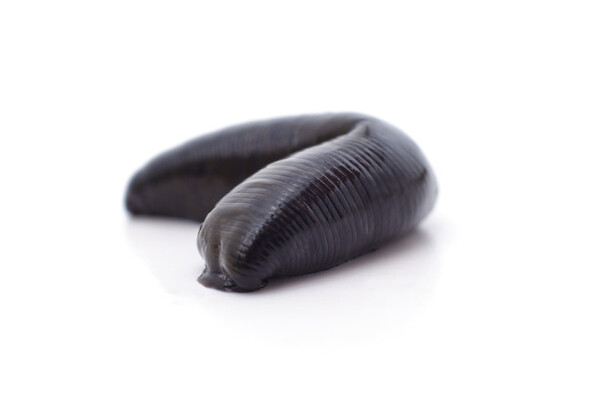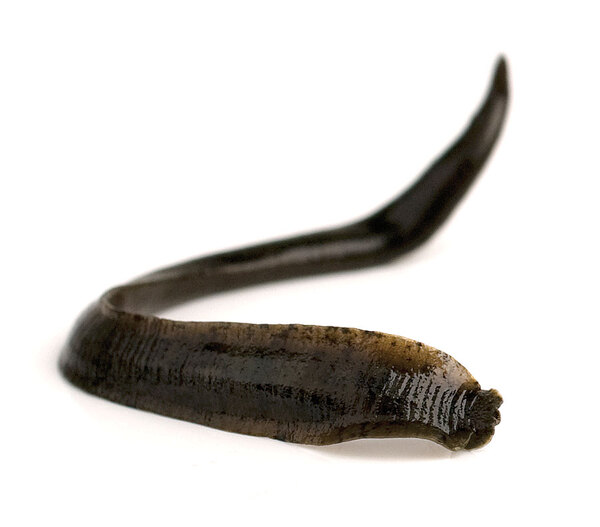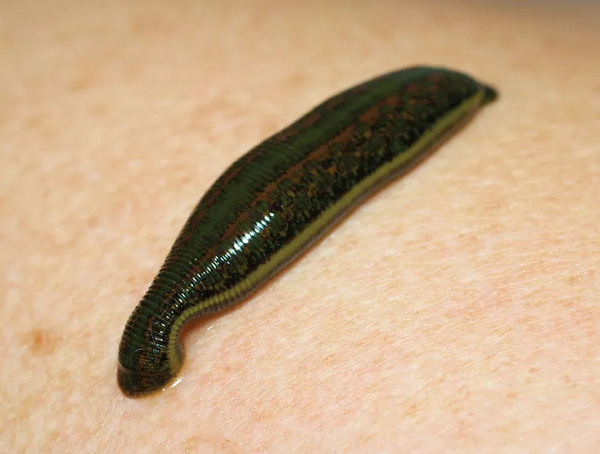Leeches have long been a source of fascination and fear. Often associated with medical procedures in the past, these segmented worms can invoke a strong reaction from those unfamiliar with them. In this article, we'll explore whether leeches are dangerous, their biological characteristics, potential risks, and their surprising benefits.
Leeches are annelids belonging to the subclass Hirudinea. They can be found in freshwater, saltwater, and moist terrestrial environments. There are over 700 known species of leeches, each varying in size, habitat, and behavior. While many people think of leeches as bloodsuckers, not all species feed on blood; some are detritivores or predators of small invertebrates.

Leeches are fascinating creatures belonging to the subclass Hirudinea within the phylum Annelida (the segmented worms). Known for their elongated bodies and unique feeding habits, leeches have been both feared and admired throughout history. Here’s a detailed look at their characteristics, habitat, behavior, and medical uses.
Here’s a table displaying different types of leeches along with their characteristics and habitats:
| Type of Leeches | Scientific Name | Feeding Habit | Habitat | Notable Features |
|---|---|---|---|---|
| Medical Leeches | Hirudo medicinalis | Blood-sucking | Freshwater environments | Used in medicine for bloodletting and reconstructive surgeries. |
| Tiger Leeches | Hirudo verbana | Blood-sucking | Ponds, lakes, rivers | Known for their distinctive stripes and aggressive feeding behavior. |
| Marsh Leeches | Limnodrilus spp. | Detritivorous | Marshy or swampy areas | Live in mud and feed on decaying organic matter. |
| Black Leeches | Haemadipsa spp. | Blood-sucking | Tropical rainforests | Often found in leaf litter; can be quite large. |
| Wood Leeches | Haemadipsa zeylanica | Blood-sucking | Forested areas | Prefer humid environments; typically dark-colored. |
| Slime Leeches | Erpobdella spp. | Blood-sucking | Freshwater lakes/rivers | Known for their slimy texture; often used in ecological studies. |
| Horse Leeches | Haemopis sanguisuga | Blood-sucking | Ponds, lakes, rivers | Larger leeches that can consume significant amounts of blood. |
| Predatory Leeches | Macrobdella decora | Carnivorous | Freshwater environments | Feed on small invertebrates; have a more aggressive feeding strategy. |
This table provides a concise overview of various leech types, their feeding habits, habitats, and notable features.
Body Structure: Leeches have a segmented body that can range from a few millimeters to over 30 centimeters in length. Their bodies are typically flattened and can be divided into several sections, with a front and back end.
Suckers: They possess a sucker at both ends of their body, which helps them attach to hosts. The anterior sucker is often used for feeding, while the posterior sucker aids in movement.
Skin and Color: The skin of leeches is usually smooth and may exhibit various colors, including shades of brown, green, or even vibrant patterns. Their skin contains a mucous layer that helps in locomotion and protects against desiccation.
Distribution: Leeches can be found in various environments, including freshwater (ponds, lakes, rivers), saltwater, and damp terrestrial habitats. They prefer environments rich in organic matter, which provides food and shelter.
Adaptations: Leeches are well-adapted to their habitats, often using their suckers to cling to vegetation, rocks, or other substrates.
Leeches possess unique structures often referred to as "teeth," but they are not teeth in the traditional sense. Here’s an overview of leech teeth:
Jaws and Teeth: Leeches have a set of chitinous jaws or teeth located in their mouth. These jaws can have one to several sharp, pointed projections that help the leech anchor to its host and create a wound for feeding.
Number: The number and arrangement of these "teeth" can vary among different species. For example, some leeches may have three prominent teeth, while others can have more.
Feeding Mechanism: When a leech attaches to a host, it uses its jaws to cut through the skin. The teeth allow the leech to create a small incision, enabling it to access the blood vessels underneath.
Blood Intake: Once attached, the leech injects anticoagulants from its saliva into the wound, preventing blood from clotting and allowing it to feed efficiently.
Evolutionary Traits: The presence of these sharp jaws is an evolutionary adaptation that allows leeches to feed on a variety of hosts, including mammals, birds, and other animals.
Variation Among Species: Different leech species have evolved different jaw shapes and teeth arrangements based on their specific feeding habits and preferred hosts.
Medical Use: In medical settings, the unique feeding habits of leeches, including their ability to make incisions with their jaws, have been utilized in reconstructive surgery. The anticoagulants they secrete help improve blood flow and reduce clotting in certain situations.
Leech "teeth" are specialized adaptations that enable these creatures to effectively attach to and feed from their hosts. Understanding their structure and function provides insight into the fascinating biology of leeches and their role in ecosystems.
Diet: While many people associate leeches with blood-sucking, not all leeches feed on blood. Some species are carnivorous, preying on small invertebrates, while others are detritivores, feeding on decomposing organic matter.
Feeding Mechanism: Blood-feeding leeches use their anterior sucker to latch onto a host and then use sharp jaws or teeth to make an incision in the skin. They inject saliva containing anticoagulants to prevent blood clotting during feeding.

Sexual and Asexual Reproduction: Most leeches reproduce sexually, with separate sexes, although some are hermaphroditic. They engage in complex mating rituals, which can involve the exchange of sperm.
Eggs: After mating, leeches lay eggs in protective cocoons. The eggs develop into juvenile leeches, which are independent upon hatching.
Therapeutic Applications: Leeches have been used in medicine for centuries. Their saliva contains anticoagulants, which can promote blood flow and prevent clotting. This property is particularly useful in:
Reconstructive Surgery: Leeches are applied to surgical sites to improve blood circulation, especially in cases where blood flow is compromised.
Bloodletting: Historically, leeches were used for bloodletting, a practice that has largely fallen out of favor but laid the groundwork for modern medicinal applications.
Decomposers: Leeches play a vital role in their ecosystems as decomposers, breaking down organic material and recycling nutrients back into the environment.
Predators and Prey: They also contribute to the food web, serving as both predators of small organisms and prey for larger animals.
Infections: While leeches are not typically dangerous, their bites can lead to irritation, allergic reactions, or infections if proper care is not taken after a bite.
Disease Transmission: Although rare, leeches can potentially transmit pathogens, particularly if they have fed in contaminated water.
Leeches are remarkable organisms with diverse roles in ecosystems and valuable applications in medicine. Understanding their biology and behavior can help dispel myths about their danger and highlight their importance in both natural and human-made environments. Whether feared or appreciated, leeches are an essential part of our planet's biodiversity.

Suction: The leech uses its anterior sucker to attach to your skin. It may also use its mouth, which has sharp jaws or teeth, to create a small incision.
Anticoagulants: Once attached, the leech injects saliva containing anticoagulants into the bite site. These substances prevent blood from clotting, allowing the leech to feed more easily.
Blood Sucking: The leech then begins to suck blood. Depending on the species and the individual leech, this feeding process can last anywhere from a few minutes to several hours. During this time, a leech can consume several times its body weight in blood.
Minimal Pain: Initially, the bite might not hurt much because leech saliva contains anesthetics that numb the area. However, once the leech detaches, you might experience some discomfort.
Bleeding: After the leech is removed, the anticoagulants can cause prolonged bleeding from the bite site, which may last for several hours. This is generally not dangerous but should be monitored.
Hygiene Matters: If proper care is not taken after a leech bite, there is a risk of infection. Cleaning the area thoroughly and applying antiseptic can help prevent this.
Possible Reactions: Some individuals may experience allergic reactions to leech bites, leading to symptoms like redness, swelling, or itching. Severe reactions are rare but can occur.
While leech bites can be unsettling, they are usually not harmful if handled properly. If you find a leech attached to your skin, it’s important to remove it carefully and take care of the bite area to minimize any risks.
Pulling leeches off can be problematic for several reasons:
Skin Damage: Tugging at a leech can cause it to tear, leaving parts of its mouth or teeth embedded in the skin. This can lead to increased pain and a higher risk of infection.
Prolonged Bleeding: Leeches inject anticoagulants into their host to facilitate feeding. If removed forcefully, they might detach in a way that allows their anticoagulant to continue affecting blood flow, leading to prolonged bleeding from the bite site.
Increased Risk of Infection: Pulling a leech off may cause open wounds, which can easily become infected, especially if proper hygiene is not maintained.
Stress to the Leech: Forcefully removing a leech can stress the animal, potentially causing it to react defensively or damage itself.
To safely remove a leech, follow these steps:
Do Not Pull: Instead of yanking it off, use a pair of tweezers or your fingers to gently grasp the leech close to its mouth and slowly pull it away.
Use Salt or Alcohol: Sprinkling salt or applying alcohol can encourage the leech to detach on its own, as they dislike these substances.
Aftercare: Once removed, clean the bite area with soap and water, apply antiseptic, and cover it with a bandage to reduce the risk of infection.
By handling leeches properly, you can minimize discomfort and the risk of complications.
Leeches are known for their ability to attach to the skin and feed on blood. This behavior can be alarming, but is it dangerous? Generally, leeches are not harmful in this context. Their saliva contains anticoagulants, which prevent blood clotting and allow them to feed more efficiently. Here are some considerations regarding their blood-sucking behavior:
Pain and Irritation: Leeches can cause discomfort or irritation when they attach, but their bites are usually not painful. The anticoagulants in their saliva may lead to prolonged bleeding after removal, but this is typically manageable.
Disease Transmission: While leeches can theoretically carry pathogens, the risk of transmitting diseases to humans is low. In most cases, leech bites do not lead to infections, especially if proper care is taken.
Some individuals may experience allergic reactions to leech bites, leading to symptoms such as redness, swelling, or itching. Severe reactions are rare but can occur. If you experience unusual symptoms after a leech bite, it's advisable to seek medical attention.
Leeches can sometimes be found in dirty or contaminated water. If they feed in such environments, there may be a risk of bacterial infections following a bite. Proper wound care is essential to minimize this risk.
Despite their reputation, leeches have several benefits, particularly in medicine and ecology:
Leech therapy, known scientifically as hirudotherapy, involves the medicinal use of leeches for various therapeutic purposes. This ancient practice has been utilized for centuries and has seen a resurgence in modern medicine due to its unique properties.
Ancient Origins: The use of leeches dates back to ancient Egypt, India, and Greece, where they were employed for bloodletting and treating various ailments. In China, leeches have been used in traditional medicine for thousands of years.
Modern Revival: In recent years, hirudotherapy has been reintroduced in medical settings, particularly in reconstructive surgery and other specialties.
Leech Saliva: Leeches secrete a complex mixture of bioactive substances in their saliva, including anticoagulants (like hirudin), analgesics, and vasodilators. These compounds help improve blood circulation and prevent clotting at the site of attachment.
Feeding Process: When a leech attaches to the skin, it makes a small incision and begins to feed on blood. This process can last from 20 minutes to several hours, during which the leech may consume several milliliters of blood.
Post-Surgical Care: Leeches are particularly useful in reconstructive surgery to help re-establish blood flow to tissue flaps or grafts. They can help prevent venous congestion and promote healing.
Chronic Pain Management: Hirudotherapy may alleviate pain conditions by improving circulation and reducing inflammation.
Varicose Veins and Hemorrhoids: Leeches have been used to treat varicose veins and hemorrhoids due to their ability to reduce swelling and improve blood flow.
Skin Disorders: Conditions such as psoriasis and eczema may benefit from leech therapy due to the anti-inflammatory properties of leech saliva.
Medicinal Use: In TCM, leeches (known as "shuiqian" or 水蛭) are recognized for their ability to promote blood circulation, resolve blood stasis, and relieve pain. They are often used in formulations for treating conditions related to blood flow.
Preparation: Leeches are typically dried and ground into powder to be incorporated into herbal formulas. They may also be used in tinctures or decoctions, combined with other herbs that complement their effects.
Indications: TCM practitioners may use leeches to treat conditions such as traumatic injuries, arthritis, and certain gynecological disorders. Their blood-moving properties make them suitable for conditions characterized by stagnation.
Medical Supervision: Leech therapy should only be conducted under medical supervision to ensure proper techniques are followed and to monitor for potential complications.
Potential Risks: Risks include allergic reactions, infection at the bite site, and excessive bleeding. Proper hygiene and patient assessment are essential to mitigate these risks.
Leech therapy is a fascinating intersection of ancient practice and modern medicine. Its unique properties and benefits have made it a valuable tool in specific therapeutic contexts, particularly in enhancing healing processes and managing certain medical conditions. As with any medical treatment, it's crucial to approach hirudotherapy with caution and professional guidance, especially in the context of traditional Chinese medicine where leeches are integrated into holistic treatment plans.
Leeches play an important role in their ecosystems:
Decomposers: Many leech species contribute to the decomposition of organic material, recycling nutrients back into the ecosystem.
Prey and Predator: Leeches serve as both prey and predator within aquatic ecosystems, helping to maintain ecological balance.
In summary, while leeches can cause discomfort and pose some risks, they are generally not dangerous to humans. Their medical benefits and ecological roles highlight their importance in nature and human health. Understanding leeches and their behavior can help demystify these fascinating creatures and reduce unnecessary fear. If you encounter a leech, remember to stay calm, remove it carefully, and take appropriate care of the bite site.
By recognizing both the potential risks and the valuable roles that leeches play, we can appreciate these creatures for their contributions to our ecosystem and health.
animal tags: Leeches
We created this article in conjunction with AI technology, then made sure it was fact-checked and edited by a Animals Top editor.